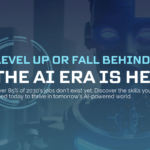In today’s world, artificial intelligence (AI) and machine learning (ML) are transforming industries, making them exciting fields to explore. If you’re a budding data scientist or ML engineer, you’ll want to equip yourself with the right tools. In this blog post, we will dive into the must-have AI libraries that can help you build amazing projects. So, let’s get started!
Does Data Science Require AI and ML?
Data science, AI, and ML are closely related but not the same thing. Here’s how they intersect:
Data Science
Data science involves extracting insights from data using statistical methods. It can include data cleaning, analysis, visualization, and reporting.
Artificial Intelligence (AI)
AI refers to creating systems that can perform tasks that normally require human intelligence like understanding language or recognizing images.
Machine Learning (ML)
ML is a subset of AI that focuses on algorithms that learn from data to make predictions or decisions without being explicitly programmed to do so.
Examples of Their Relationship
- When Data Science Relies on AI/ML: If you’re analyzing user behavior data to predict future trends using machine learning algorithms, you’re combining data science with ML.
- When It Might Not Be Necessary: If you’re simply summarizing sales reports or performing basic statistics without predictive modeling, you may not need AI or ML techniques at all.
What Are AI Libraries?
AI libraries are collections of pre-written code that help developers create software applications more efficiently. Think of them as toolkits filled with handy tools that make it easier to build AI models without starting from scratch.
Why Are They Important?
Using these libraries saves time and effort, allowing you to focus on solving problems rather than coding everything from the ground up. They also provide optimized algorithms and functions that can enhance your projects’ performance.
Must-Have Libraries for AI and ML
Here’s a list of the top libraries that every data scientist and ML engineer should know about:
- TensorFlow
- PyTorch
- Scikit-learn
- Keras
- Pandas
- NumPy
- Hugging Face Transformers
1. TensorFlow
Primary Use Cases: TensorFlow is great for deep learning and neural networks. It’s widely used in image recognition, natural language processing (NLP), and even in building AI applications.
Features:
- Supports multiple languages like Python, C++, and JavaScript.
- Offers robust tools for model training and deployment.
Popular Projects: Google uses TensorFlow for various applications, including Google Photos and Google Translate.
2. PyTorch
Primary Use Cases: PyTorch is favored for research and development in deep learning. It excels in tasks like computer vision and NLP.
Features:
- Dynamic computation graph makes debugging easier.
- Strong community support which is helpful for beginners.
Popular Projects: Facebook uses PyTorch for its AI research projects.
3. Scikit-learn
Primary Use Cases: Ideal for traditional machine learning tasks like classification, regression, and clustering.
Features:
- Easy to use with a simple API.
- Excellent documentation and tutorials available.
Popular Projects: Used in many data analysis projects across different domains.
4. Keras
Primary Use Cases: Keras is a high-level API that runs on top of TensorFlow, making it easier to build neural networks.
Features:
- User-friendly interface.
- Supports multiple backends (TensorFlow, Theano).
Popular Projects: Used extensively in academic research due to its simplicity.
5. Pandas
Primary Use Cases: Pandas is essential for data manipulation and analysis.
Features:
- Provides data structures like DataFrames for easy data handling.
- Great for cleaning and preparing datasets.
Popular Projects: Used in nearly all data science projects for data wrangling tasks.
6. NumPy
Primary Use Cases: NumPy is fundamental for numerical computing in Python.
Features:
- Supports large multi-dimensional arrays.
- Offers mathematical functions to operate on these arrays efficiently.
Popular Projects: Often used alongside Pandas for data manipulation tasks.
7. Hugging Face Transformers
Primary Use Cases: This library is specialized in NLP tasks using pre-trained models.
Features:
- Easy access to state-of-the-art models.
- Supports fine-tuning on custom datasets.
Popular Projects: Widely used in chatbots, translation apps, and more.
Is PyTorch Better Than TensorFlow?
This question often sparks debate among developers! Let’s break down the pros and cons of each library so you can decide which one suits your needs better.
| Feature | TensorFlow | PyTorch |
|---|---|---|
| Ease of Use | Steeper learning curve | More intuitive and beginner-friendly |
| Performance | Better for large-scale production | Faster prototyping |
| Community Support | Strong industry backing | Growing academic support |
| Deployment Tools | Excellent tools like TensorFlow Serving | Less comprehensive deployment options |
When to Choose TensorFlow
Choose TensorFlow if you’re working on large-scale applications or need robust deployment options. It’s widely used in industry settings where performance at scale is crucial.
When to Choose PyTorch
Pick PyTorch if you’re just starting out or focusing on research projects. Its dynamic nature allows for quick iterations, making it great for experimentation.
Dive In!
Now that you know about these essential libraries, it’s time to take your first steps into machine learning! Imagine building your own model that can predict trends or classify images! The possibilities are endless when you start experimenting with these tools.
Remember, each library has its strengths and weaknesses. Explore them based on your project needs whether it’s deep learning with TensorFlow or quick prototyping with PyTorch!
Conclusion
In conclusion, mastering these must-have AI libraries will set you on a path towards becoming a proficient data scientist or ML engineer. Don’t hesitate dive into these libraries today! With practice and exploration, you’ll be able to create fantastic projects that leverage the power of AI and machine learning. Happy coding!












